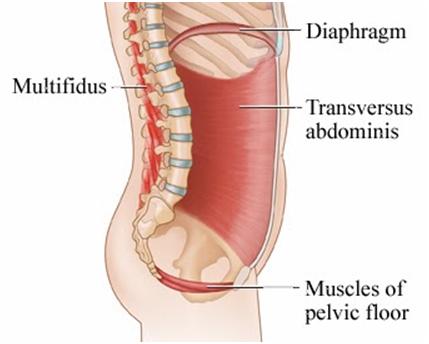Post-natal Pilates: Is it right for you?
Is post-natal Pilates right for you? Getting back into exercise is tough after having a baby. Limited sleep and a never-ending to do list can make regular exercise seem unachievable. Your body has been through a lot during pregnancy and birth. It’s important to allow your body time to recover and to get back into exercise gently.
Doing the right type of exercise after giving birth is important. Returning to high impact exercise (such as running and team sports) before your body is ready can increase your risk of long-term pelvic floor weakness and pelvic organ prolapse. Strengthening your pelvic floor and abdominal muscles provides your body with the strong base it needs to return to high impact activities safely.
We’ve already written about tips to improve and keep your pelvic floor strong. You can read more about returning to sport and exercise after birth here and here.
Post-natal Pilates is an excellent way to target those muscles most affected by pregnancy and birth. It also increases your whole body strength and fitness in preparation for returning to other forms of exercise.
So what are the benefits of post-natal Pilates?
Pelvic floor re-training
The pelvic floor muscles lie between the tailbone and pubic bone, supporting the bowel, bladder, uterus and vagina. These muscles can become weakened after having a baby. Strengthening the pelvic floor muscles is important to prevent and treat issues such as incontinence and pelvic organ prolapse.
During our post natal pilates classes you will learn how to properly activate your pelvic floor muscles. These muscles will then be strengthened by completing a range of exercises to train your pelvic floor for every day activities as well as higher impact exercise.
Reducing abdominal separation
During pregnancy the abdominal muscles stretch to accommodate your growing baby. Abdominal separation occurs when the connective tissue sheath that joins the left and right abdominals becomes stretched, creating a gap.
Pilates focuses on activating the deep abdominal muscles, in particular the transverse abdominus, which lies underneath the abdominals we commonly think of as our ‘six pack’ abs. Training the deep abdominal muscles has been found to reduce abdominal separation and teaches you to properly use your core for both everyday activities and exercise (Benjamin et al 2014).
Core strengthening
The term ‘core’ is mentioned a lot in the health and fitness world. For the purposes of our Pilates classes the core refers to the transverse abdominus, pelvic floor muscles, multifidus and the diaphragm (see picture below). These muscles lie underneath our more superficial abdominal and back muscles.
Learning how to activate these muscles provides a strong and stable base for activities such as lifting and for all forms of exercise. When these muscles are switched on and working properly, difficult activities are much easier to achieve with good technique.

Whole body strengthening
As well as training the core muscles, Pilates strengthens the upper and lower body. Each of our Pilates classes are designed to target the whole body, containing exercises to strengthen the core, arms, gluteals, legs and improve posture. Looking after a baby is a whole body challenge, especially as they grow to be toddlers!
Increased energy
Regular exercise increases our energy levels and improves our psychological, emotional and physical wellbeing. Growing stronger through Pilates will make every day activities seem easier and more achievable. Regular exercise will also increase the quality of your sleep. Good quality sleep is particularly important when you’re not getting large amounts of it!
When can you start post-natal Pilates?
- This can vary for everyone depending on the type of birth (vaginal or caesarian) and the degree of abdominal separation (rectus diastasis).
- Generally, most women will be ready to start post-natal Pilates 6 weeks after giving birth.
- To ensure that you’re ready, you will have an individual assessment with one of our Physiotherapists. This assessment includes using real-time ultrasound to assess the pelvic floor and transverse abdominus muscles. This allows us to see how your muscles are working and to adjust exercises as needed to suit you.
What to expect from post-natal Pilates:
- Exercises targeted towards strengthening those muscles most affected by pregnancy and birth.
- Education about pelvic floor health, appropriate home exercises and the best way to return to more high impact exercise after having a baby.
- A social and relaxed group class.
- Individual adjustments to make sure each exercise is at the right level for you.
Frequently asked questions about our post-natal Pilates:
-
What should I wear?
- Comfortable, stretchy clothing that you can move easily in.
-
What should I bring?
- A water bottle is all you need.
- We provide mats, towels and any other equipment you may need
-
How many people are in a class?
- At Sport & Spinal Physiotherapy’s post-natal Pilates classes we have a maximum of 8 people per class. This allows our Physiotherapists to give everyone individual attention within the group setting.
-
Can I bring my baby?
- Absolutely! Avoid the hassle of arranging baby sitting by bringing your bub along. They can play on the floor next to you and even be part of some of the exercises.
References
Benjamin DR, van de Water AT, Peiris CL. Effects of exercise on diastasis of the rectus abdominis muscle in the antenatal and postnatal periods: a systematic review. Physiotherapy 2014; 100(1): 1-8.
Larson-Meyer, D. E. (2002), Effect of Postpartum Exercise on Mothers and their Offspring: A Review of the Literature. Obesity Research, 10: 841–853. doi:10.1038/oby.2002.114
Levitt, C., Shaw, E., Wong, S., Kaczorowski, J., Springate, R., Sellors, J. and Enkin, M. (2004), Systematic Review of the Literature on Postpartum Care: Methodology and Literature Search Results. Birth, 31: 196–202. doi: 10.1111/j.0730-7659.2004.00305.x


